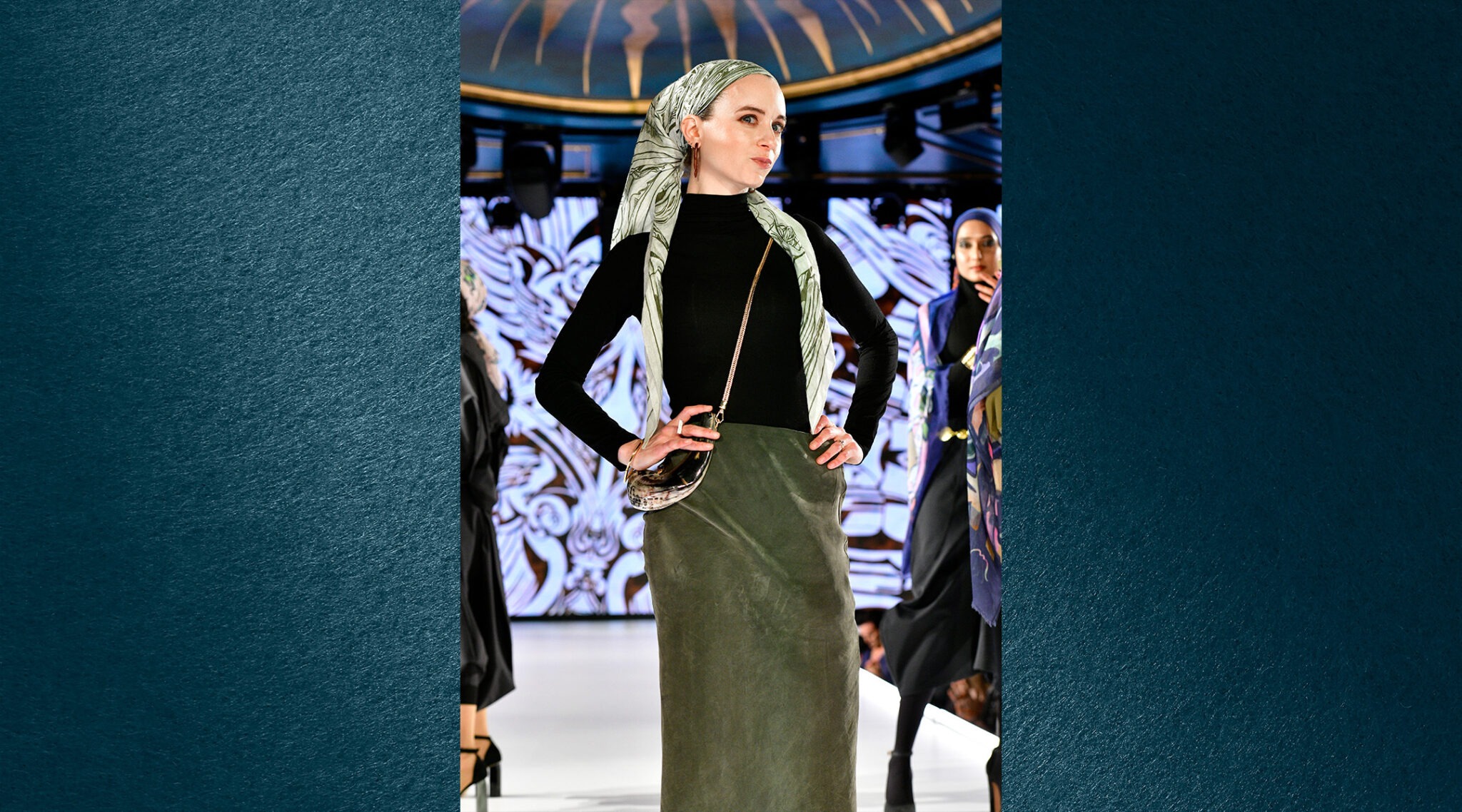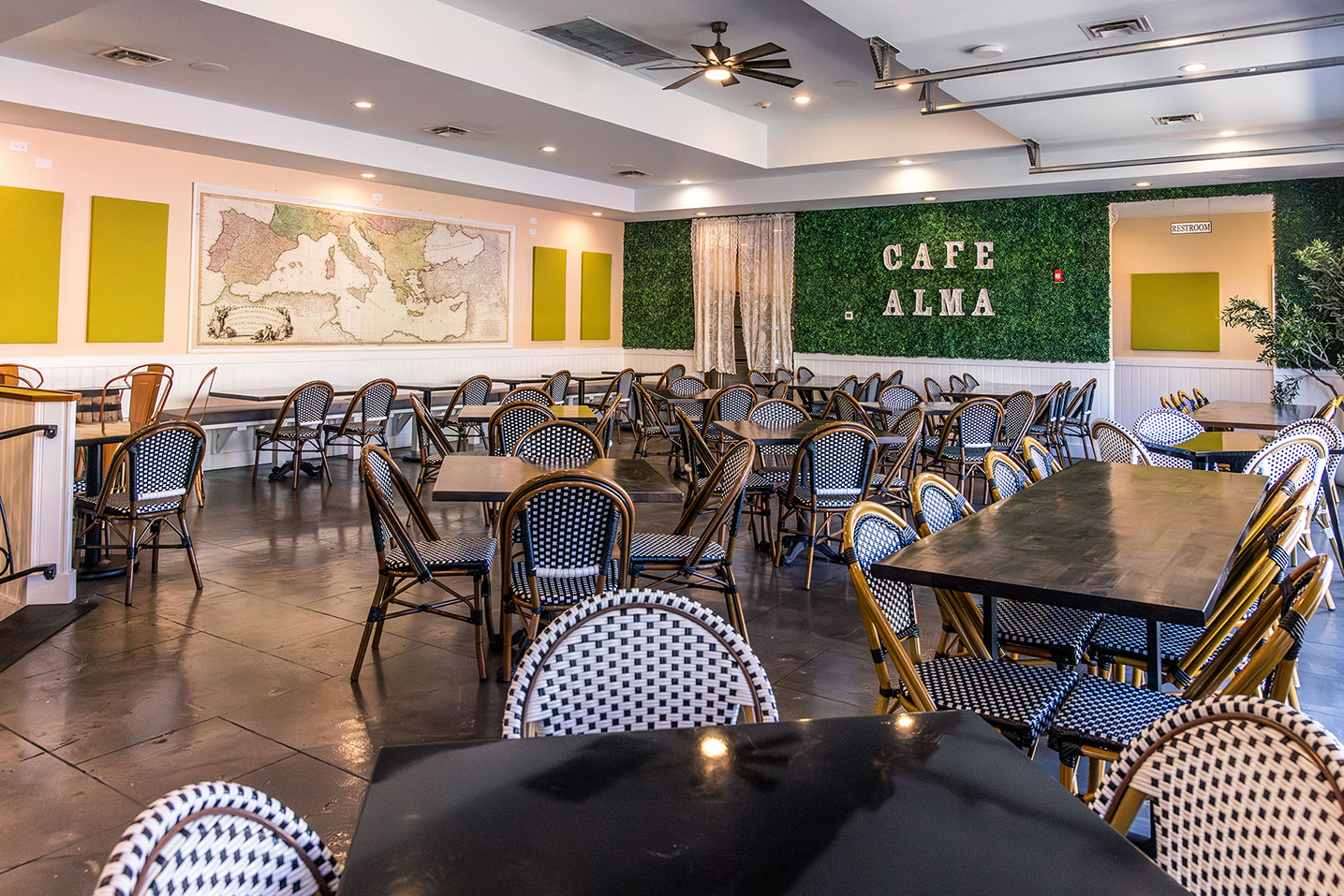(New York Jewish Week) — When Elke Reva Sudin got married 16 years ago, she was a 20-year-old art school student at the Pratt Institute in Brooklyn. She wanted to figure out a way to cover her hair — a traditional practice among Orthodox Jewish women — while still being true to herself.
So instead of wearing a wig, which some women choose to do, Sudin opted for headscarves. This enabled her to wear colorful, artistic styles, which made her feel that she wasn’t hiding her personality — instead, she felt like she was adorning herself with something special.
“The decision to not wear a wig was part of being authentic to my identity as an artist — I didn’t want to hide something that I was doing,” Sudin, 36, told the New York Jewish Week.
Now a mother of two and a full-time artist in Brooklyn, Sudin has expanded on this idea by designing her very own luxury scarf collection. Called the Crown Collection, Sudin debuted her scarves under her own brand, Elke NYC, at New York Fashion Week. On Sunday morning, Sudin was one of six designers participating in a fashion show at Midtown’s Sony Hall presented by Runway 7, a fashion collective and incubator that showcased more than 117 designers in shows throughout the week.
“What really excited me about doing the Runway 7 show was being able to give this idea this high-end, Fashion Week platform to say headscarves are getting their moment,” Sudin said.
For her designs, Sudin said she finds inspiration in Kabbalah, or Jewish mysticism, and her own spirituality. Her scarves, which are made of modal or silk, are “mystical in nature, unapologetically psychedelic, and evoke the liquid and ethereal,” her website says. “The movement in each design taps into subtle wavelengths to enhance the energy patterns within each of us.”
Although Sudin created the scarves with Orthodox women like herself in mind, she hopes anyone, of any religion, can find pleasure in wearing her scarves.
“At this show, I was really showing the diversity of ways that scarves can be worn,” she said of the five brightly colored scarves that were sent down the runway, donned by a multicultural set of models. “Depending how you fold it, depending on how you wear it, they sit differently.”
One model wore a look Sudin called “Sikh chic,” the scarf wrapped around his head like a turban, with a matching pocket square tucked into the breast pocket of his suit. Another model wore the scarf as a hijab, and a third used another scarf as a hair wrap.
Sudin also showcased brand-new modest, packable apparel to her runway show. She said was inspired to create the clothes after realizing how much she needed clothing that was easy to throw on, modest, and versatile enough to work during long, hectic days while also being suitable to for an evening event or Shabbat dinner.
Among the items was what she calls a “skant” — bottoms that can be worn as either a skirt or pants and features hidden pockets for phones, wallets and passports. Another item, a top called a “shrag,” can be worn as a jacket and has a detachable hood and pockets that allow it to fold into itself.
“The apparel, like the rest of the work, has this element of traditionalism being brought into modernity,” Sudin explained. “The pieces fall within modest fashion, but are inspired more by streetwear with an added layer of technical construction that is more like trail wear, like something you’d wear hiking.”
In addition to designing apparel, she runs a company, Drawing Booth, that draws live portraits of guests at events across the country and in the United Kingdom, so she travels frequently.
“I thought about what I needed while traveling — going from the airplane to work and corporate events and then Shabbos, things like that,” she said. “I surveyed other Jewish female travelers and they all had something that was low-quality material that they bought randomly. So I’m bringing a tailored, elevated look.”
Sudin, who participated in a Jewish-oriented fashion show at Tribeca Synagogue last spring, called the Runway 7 show a “next-level” moment. She described participating in a secular fashion show while showcasing designs that are inspired by her Jewish identity as the culmination of her work as an artist, fashion designer and Jewish woman — she even carried a shofar with her as she walked the runway as a nod to the concept of blending ancient and modern design.
“I used to do a lot of work in the Jewish community,” said Sudin, who was heralded by the New York Jewish Week for “revitalizing the Jewish art salon” in 2011. “Then, at a certain point, I made the decision that I want to go mainstream. This show pushed me to do that. I’m now competing with great designers and to see my work holding up is really thrilling.”





